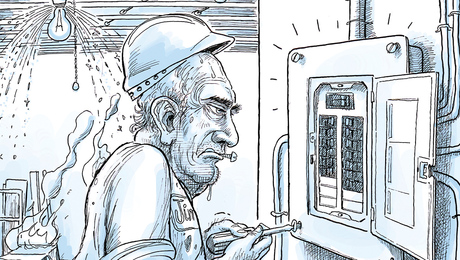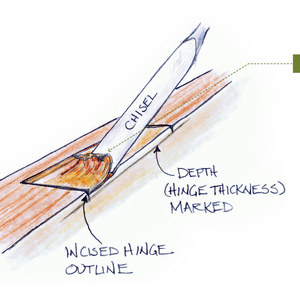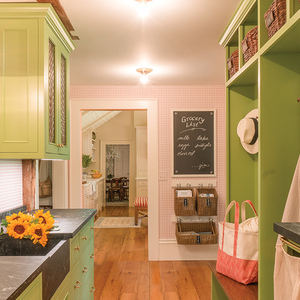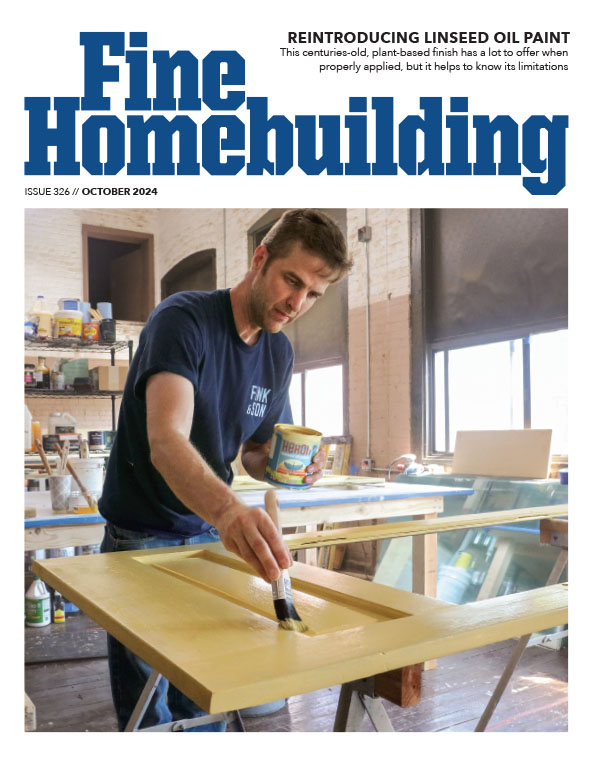My first post to this forum.
I am doing a renovation on an old vacation home that has a poured concrete foundation with one side open with wood framed construction.
Question: on the sides that are concrete there is constant dampness which had been strapped and covered with paneling which has deteriorated over time. The owners are concerned about the mildew smell and the resulting mold which has caused respiratory problems for an Asthma suffering resident of the home.
What is the best way to address this problem, before recovering the walls, and then the best way to recover them, it will be done with wood again. Don’t really want to go outside and address it with drainage if at all possible. There is a wooden floor that is partially suffering the same problem. This whole area is surrounded in close proximity by ledge..
Thanks for any and all advice



















Replies
You probably don't want to hear the answer. But to eliminate the mold and mildew, you MUST eliminate the water. And to eliminate the water, you oprobably need that drain on the outside -- the one that you said you don't want to do. (Althought there is some possibility that the moisture is condensation from the inside, and not seepage from the outside.)
And if you really want to be sure, then you'll also put in a perimeter drain and a sump pump on the inside. Then whan you strap the walls, you can put up a vapor barrier that directs the moisture to the perimeter drain, before it can get to the wood.
Good luck.
You probably don't want to hear this answer either, but I'd walk away now. With all the mold litigation going on right now, you'll be on the hook if you make "repairs" to "eliminate" the mold issue, and it comes back later. You're already aware that there's a resident in the house who's hypersensitive to the issue, and it'll come back and bite you hard if there's a problem in the future.
The best course of action would be to contact a mold remediation company (an expensive proposition), and let them correct the mold issues and give the house a clean bill if health. Then, you can do the renovation work, but be sure to exclude any warranty against future mold in your contract.
Bob
Ditto to the others said - although the mold litigation frenzy seems to be cooling off rapidly.
A lot of good info at http://www.epa.gov/iaq/molds/
_______________________
Why Don't Blind People Like To Sky Dive?
Because it scares the bejabbers out of the dog
Your mileage may vary ....
Bob:
Good link with a lot of good information there,,been in the business 35 years and about ready to retire early next year, so don't need any major headaches at this point. I have really never had to deal with any major mildew in a living space like this before. the two wall surfaces involved are in finished rooms next to, uninsulated, strapped with paneling, below grade, concrete in an area of the country with big temperature swings between seasons. (Northern Vermont)..
Thanks for the information..
I had thought that the frenzy was justifiably dying too. That was until August, when a number of dormitories at NC Central university were closed due to mold. These closings seem (based on what I've read/heard from news) to be frenzy-related rather than true problems.
They discovered mold in basements, and in ductwork, in some college dorms. All of a sudden, the buildings were quarantined, and nobody went in without LOTS of protective gear.
But all of the news reports seem to be saying that none of the mold is the nasty variety -- it's the stuff that you and I see all the time. And while I'm sure that we'll agree its a good idea to get rid of it, closing the dorms and renting hotels for 500 students seems a bit of overkill-- or a frenzy.
Vast projects should not be founded on half vast ideas.
After you get the mold taken care you have to figure outwhere the moisture is coming from.
It might be coming through the foundation.
Or air might be circulating behing the wall and condensing on the realitively cool concrete during the sumemr.
Where are you located?
I am Located in Northern Vermont and I think the moisture is mainly condensation from the close proximity of ledge to the exterior walls, which is VERY prominent in this area. Not to worried about the litigation I have done a lot of work for these people over the years on their other house's, but want to do as good a job as I can. I will however get a dispensation from them on the liability issue.
The walls are going to be stripped to the concrete and done over, thought there might be a way to clean then coat the walls with something and install some sort of vapor barrier before putting on the new covering, there is no large influx of water only condensation, (that I have seen).
Thanks